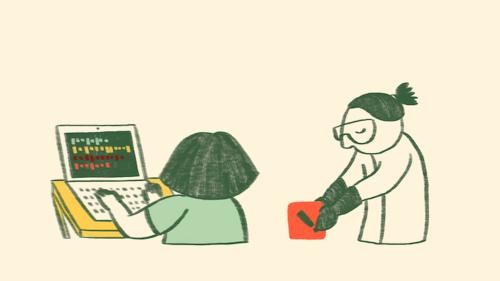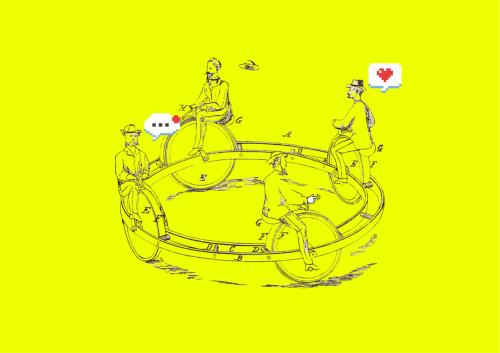What do the Constitutional Convention, the Talmud, and Wikipedia have in common? That’s the question behind a new project Brookings has launched in partnership with the Center for the Constitution at James Madison’s Montpelier. The project, about which I am deeply excited, is at one level an attempt to bring to life the most important document in American history that nobody ever reads: Madison’s Notes of the Debates in the Federal Convention of 1787. At another level, however, it is a broader experiment in crowd-sourcing commentary on dense historical texts and in illuminating those texts for the public, for students, and for scholars in new ways.
It also has an interesting story behind it.
For several years now, Brookings and Montpelier have been conducting joint programming on a variety of issues related to the Constitution and contemporary public policy. Montpelier, for those of you who have never visited it, is the plantation of James Madison. The idyllic setting is also the home of the Center for the Constitution, which conducts educational seminars about constitutional thought for a variety of audiences: teachers, police officers, legislators, judges. The Brookings-Montpelier collaboration began as an effort to marry such discussion of Founding Era thought with Brookings work on contemporary public policy. Over time, however, we began talking about ways to expand the collaboration into publications. At one point, I suggested to Sean O’Brien—then the director of the center and now the chief operating officer of the larger Montpelier operation—that perhaps we should jointly publish a new edition of the Notes of the Convention. They are, after all, the best record of the Founding debates we have. And while everyone reads the Federalist Papers, very few lay people touch the Notes, which are dense, written in a kind of shorthand code, and are hundreds of pages long.
When I suggested this, Sean sighed and said that the center had been struggling for some time with what to do about the Notes. Another published volume of them, he thought, was not the answer. Somehow, he wanted to bring the Notes to life—to make it possible for people to be in the room as the delegates in Philadelphia thrashed out what became our system of government. Sean’s spot-on ambition started me thinking: Was there a way to do this using technology, a way that added intellectual value and was not mere kitsch? Could we take a long, impenetrably-difficult text, and tease meaning out of it in a format that people could more easily approach?
There is a model for this sort of thing, but it’s not a model from the American constitutional tradition; it’s the Talmud—the multi-volume exposition of Jewish law that developed after the Romans sacked the Temple in Jerusalem. The Talmud is a series of debates—and commentaries on those debates—on a text called the Mishnah. The rabbis found an ingenious way of commenting on this dry, lengthy text in a language (Ancient Hebrew) which was already in Roman times no longer their vernacular (they spoke and wrote in Aramaic). On a page of Talmud, a passage of Mishnah is physically surrounded by layers of commentary text, more and more of them as the centuries wore on. So in the center of the page is a short passage, by tradition, of course, Divine, but often in practice dry as dust; yet radiating out from that passage is centuries of wisdom and thought. It is not merely a form of crowd-sourced scholarship, but it is a visual means of expressing that scholarship and crowd-sourcing that seemed to me to have broad application to the exposition of lengthy and difficult historical texts like the Notes.
The trouble, of course, was that the Talmud developed over centuries, whereas Sean and I wanted to bring out the Notes now. And that’s where Wikipedia comes in. If the wisdom of crowds can write an encyclopedia, maybe a smaller crowd of scholars and interested lay people could write a commentary on the Notes. Perhaps we could develop a technological architecture that would allow a scholarly community to do over months and years what the rabbis took centuries to do with the Mishnah. This required software development.
The result is ConText, which launched today, Madison’s birthday. Organized like the Talmud, ConText surrounds the Notes with layers of commentary—commentary on the history (what was going on in the room), current events (how these events relate to current politics), theoretical and philosophical issues, and subsequent constitutional interpretation and dispute. Like Wikipedia, that commentary will be written by a scholarly community that develops around ConText: historians, constitutional scholars and practitioners, and interested students and lay people. Both the text and the commentary are fully searchable. And anyone can get an account and begin contributing.
The ConText project is not limited to the Notes, though the Notes represent the core of the experiment. If this platform will support a scholarly community devoted to illuminating this document, there are a great many other Founding Era texts (and texts from other periods), for which it might work as well. I have even flirted with the idea that it might offer a way for the intelligence community to seek analytical input on complicated contemporary unclassified texts from a broad range of scholars from whom it does not normally hear.
So please, check it out. Learn about the Notes, and contribute your knowledge of them and of the later constitutional history that began with them to the project.
The Brookings Institution is committed to quality, independence, and impact.
We are supported by a diverse array of funders. In line with our values and policies, each Brookings publication represents the sole views of its author(s).



Commentary
ConText: An Experiment in Crowd-Sourced Commentary
March 16, 2012